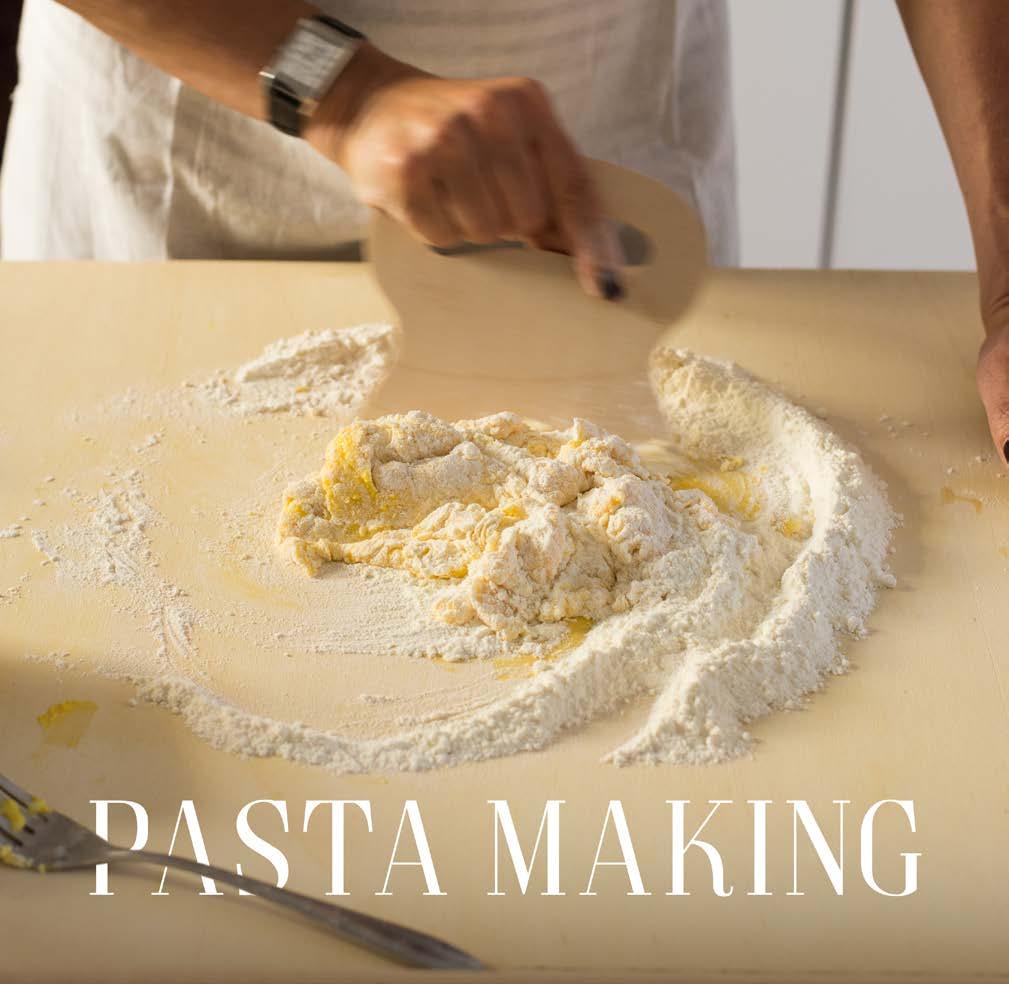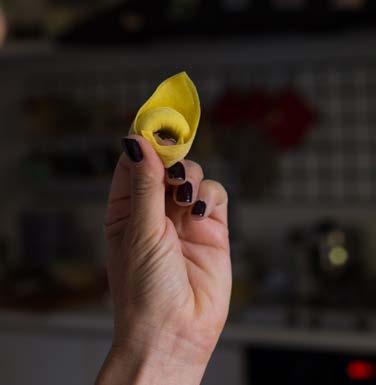
6 minute read
Travel: Italy Pasta Making Experience
By Hand at Home
Story & Photos by Lori Rice
Cristina Fortini met me outside the Nuovo Mercato Esquilino, an indoor market offering produce, meats, and cheeses near the Roma Termini train station in Rome, Italy. After quick introductions, we went straight into the market where my education in Italian ingredients began.
The truth is, I never wanted to travel to Italy. At least not like others who dream of vacations filled with pasta and red wine. Food and travel have been my personal and professional passion for years, but I’d grown proud of my ability to seek out the unexpected, to find notable foods and inspiring stories in places not often celebrated for their culinary contributions.
It’s no secret that Italy has outstanding food and a food culture that takes its traditional methods and ingredients seriously. What could be left for me to explore or uncover there that hadn’t already been shared many times over?
Yet here I was, standing in Rome with plans to travel on to Bologna, then Florence before attending a food photography retreat. I’d packed these four days full with markets to visit, restaurants to dine at, and gelato shops to check out, right down to the must-have flavor. If there was a unique food experience or a new angle to discover here, I was going to do it.
Cristina is the founder of Italy Food Nest, a culinary company that specializes in pasta-making classes and gastronomic tours. The day I’d planned to spend with her in one city unfolded into two days in two different Italian cities, and it changed my view of Italy forever.
The moment we stepped into the market, I knew I had underestimated how this day would influence my perception of Italian food. Small, sweet round melons with bright peach-colored flesh were overflowing out of crates begging to be wrapped in a sheet of salty prosciutto. Tomatoes with deep, ribbed edges in vibrant shades of red, orange, and pink had me pondering what pasta sauce they would soon be used to create.
The questions wouldn’t stop. I had so many. And Cristina answered each of them in detail, showing her deep knowledge of the country’s cuisine. She led me to a cheese vendor and proceeded to order sheep’s milk ricotta which we would stuff into our pasta later that day.
We made our way to a tree-lined, residential street, through the gates and up the stairs where we rang a doorbell and were soon welcomed into a home. This was the home where my pasta-making lesson would take place.
It’s one thing to learn to make pasta in Italy. It’s quite another experience to make that pasta in an Italian home kitchen with a welcoming host to guide you. Being in the home of a local, using their countertops and stove to make your pasta, enjoying it at their table all while listening to discussions about regional differences in pasta preparation makes this an encounter that can never be replicated. I’m not one to call things once-in-a-lifetime, but if I were, this day would be it.
While Cristina met me in Rome, she’s based in Bologna, and she partners with hosts in these two cities as well as in Florence, Milan, and Naples. For a pasta-making experience like this, you don’t meet at a culinary school for instruction, your learning takes place in a home, an Italian kitchen. It’s impossible for the impact of such an authentic, immersive learning experience to ever leave you.
That early summer afternoon, we made tortelloni, not to be confused with the tortellini that Bologna is known for. Tortelloni is bigger and a much easier pasta to create for novice students like myself. We stirred together the sheep’s milk ricotta with Italian parsley. I watched as Cristina showed me how to blend the eggs and flour, then roll the sheets of pasta to a thinness that seemed nearly impossible. We cut the pasta, filled it with the herbed cheese, and rolled each piece on our finger to make its signature shape.



Once cooked, I was served a bowl of tortelloni as a reward for my efforts, which still have plenty of room for improvement. Topped simply with grated parmesan, the tender pasta melted into creamy, tangy cheese in my mouth. It remains a favorite meal of all my travels.
When parting ways that afternoon, Cristina learned of my plans to be in Bologna the next day. I did not turn down an invitation to meet her in Mercato di Mezzo for a tour of this historic food center in the middle of the city. I quickly learned that each region of Italy has a food identity that is all its own, and for me, there is no better example of this than the Emilia-Romagna region and its capital, Bologna.
The streets of Mercato di Mezzo show off each specialty of this area. Of course, there are rugged chunks of Parmigiano-Reggiano and thin slices of mortadella, but also varieties of bread I’d never encountered and handmade tortellini by the scoop for cooking at home. Cristina explained each food we explored while showing me historic wine taverns and special restaurants along the way.
While visiting one region of Italy through food will surprise you, visiting two will open you up to the incredible depth of regional cuisine and to both the minute and substantial differences that exist. You leave finding it difficult to continue using the broad term—Italian food—to describe it.
While making pasta in an Italian home is an unforgettable experience, what my first trip to Italy taught me is that the food and adventures surrounding it aren’t about finding something new. They are about tradition and individual experience. Despite the many stories told by others and the informative reports on the local specialties, nothing can accurately capture the food and rich culture of this country like experiencing it yourself.











